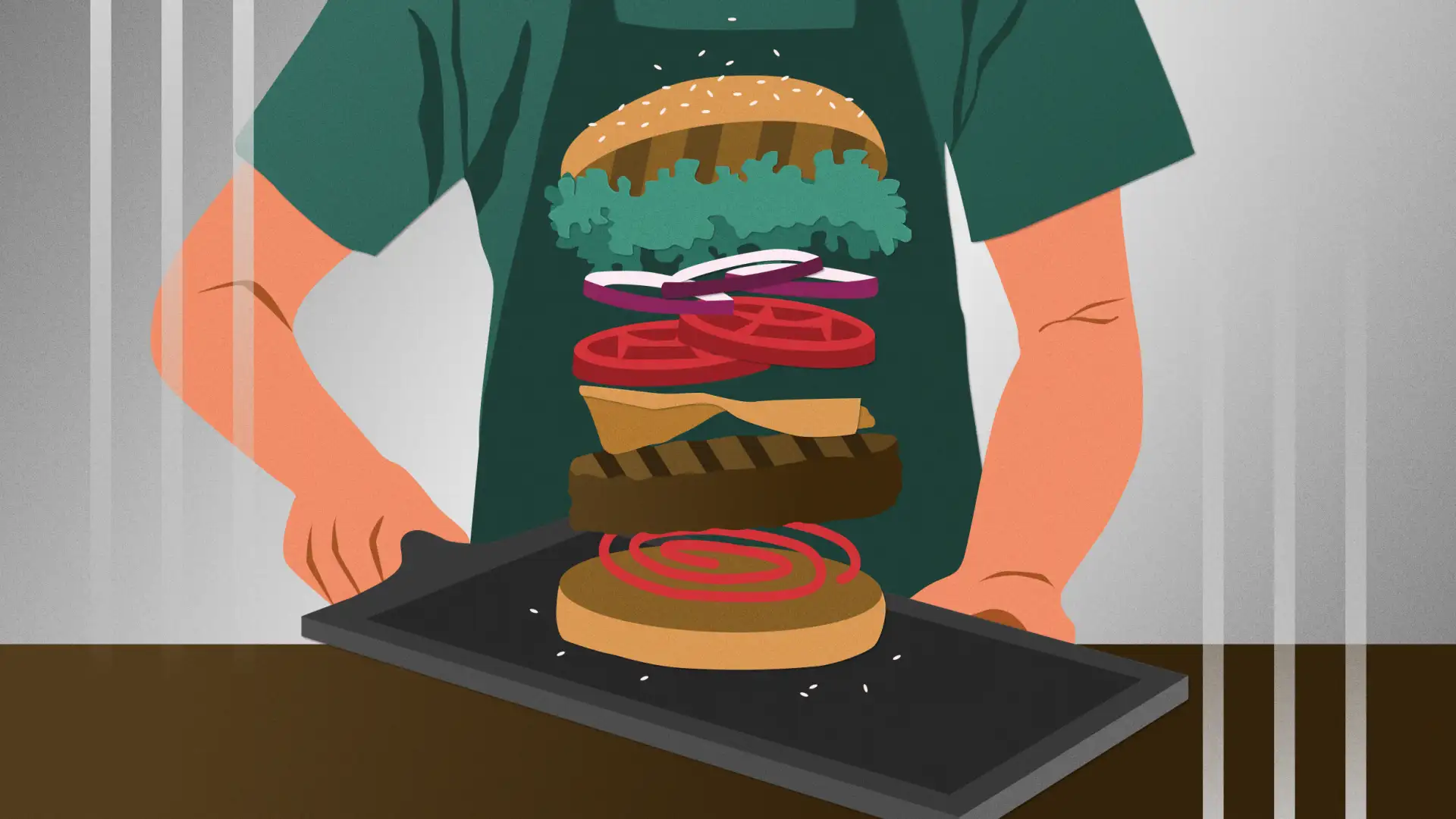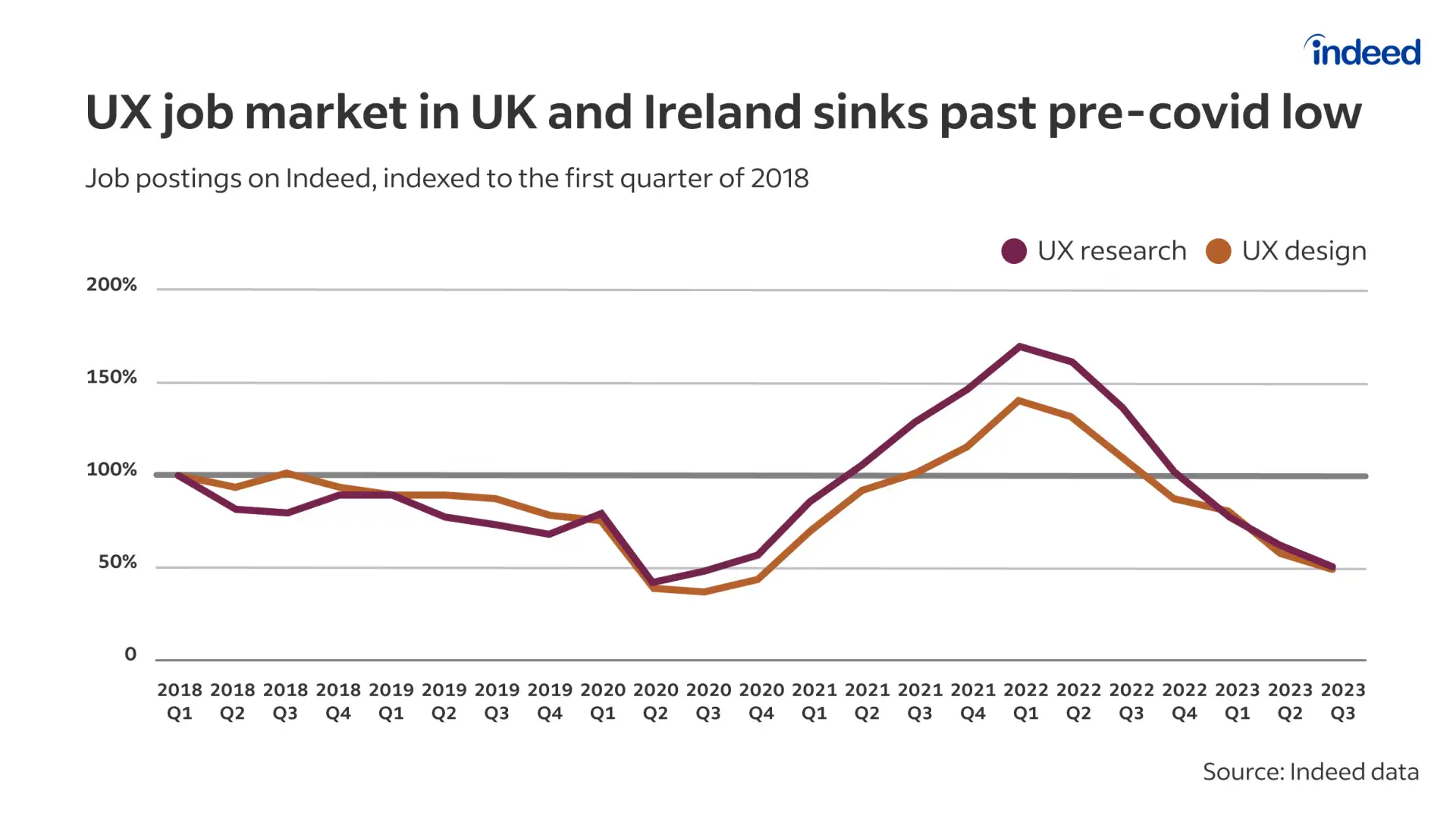Is this a UX research tips article in disguise as a food blog? Of course it is. So come along, dear reader, on this involuntary journey of sentimentality and sweet recipe for success. Below you will find a summary of the rapid research program I led at Indeed and a recipe for creating one yourself.
Rapid research programs can take various forms, depending on your research needs and resources. These programs tend to be built around a limited scope and a promise to deliver insights fast!
Mine yielded over 80 cross-team studies within a 13-month period. This body of work touched every single business objective for the year and catalyzed varied and sustained impact throughout Indeed’s products. More than that, an internal survey rated this rapid research program at 4.9 out of 5 stars! ⭐⭐⭐⭐⭐
This recipe is perfect for research-hungry organizations with a need for more evaluative insights. Made from templates and contracted budding researchers, this recipe is easy to follow, making it a must-try for your UX organization.
Pre-recipe preamble
It was September of 2021 when, from an apartment nestled within the vibrant New York borough of Brooklyn, I first savored the zest of a new and somewhat ambiguous user experience research role at Indeed. My first task? Help the organization deliver more evaluative research based on needs and available resources. To do that, I needed to:
- Understand the existing practice and knowledge of evaluative research at Indeed
- Determine how hungry teams were for evaluative insights, why they needed them, and what risks we faced in not having them
- Develop a solution that scaled enough research to feed an army and ensured high-grade, high-quality insights
Initially, I provided resources and guidance for UX designers to execute their own evaluative research—but this only whet the appetite for insights.
To satiate demand, we developed a dedicated program. We hired budding researchers, who craved to enter the workforce, to conduct rapid research. This new way of operating allowed designers and researchers to reprioritize their workloads. It also enabled a higher quantity of design iterations and evaluations.
This program delivered a well-done study once a week and, amidst the hustle and bustle, I saw first-hand how this program helped these budding researchers break into the field and grow as a result of their experiences.
They reminded me of the start of my career and the gratitude I still hold for the first manager who took a chance on me. They also reminded me that there’s always something to learn no matter where you are in your career. I will always relish the experience I had working with the rapid researchers.
Now that you’ve had a little amuse-bouche and your taste buds are awakened to the delicious possibilities of rapid research, let’s dive into the recipe so you have what you need to get started on building a program with your team.
Don’t start rapid research without these ingredients
Before trying to make a rapid research program, make sure you have the ingredients for success:
- A need for more frequent evaluative research
- A lack of bandwidth
- Stakeholder buy-in
- Headcount for rapid researchers
- Dedicated oversight
- Research tooling for recruitment and testing
You’ll need them to avoid risk in a variety of flavors like wasted resources and low-quality research.
Make your own rapid research program from scratch
Rapid research is not a one-size-fits-all solution. What yours will be depends on several variables such as company size, UX maturity, availability of tools, and headcount—and, of course, the research needs.
Rapid research, and similar programs, vary across the industry. We even had two different versions of rapid research programs at Indeed, varying in methodologies and cadences! So keep in mind that you can customize these recipe steps to your needs.
1. Prep the operations
Timing is important when you market your research services as “rapid.” It’s important to have support and tools in place—especially if your rapid researchers are less experienced in research. This ensures the quality of research doesn’t suffer and the output or speed of insights doesn’t wane.
Organize tools and templates ahead of time to reduce stress and guesswork among your rapid researchers. This will also accelerate ramp-up, enable autonomy, and help maintain quality.
Some things you can prepare ahead of time include:
- Guides on how to use recruiting and project-tracking tools
- Templates for various aspects of work (such as planning, analysis, and final deliverables)
These templates offer a great starting point. This allows the dedicated oversight to offer focused and study-specific guidance as needed.
Other things you’ll want to prep include:
- An intake system so teams can request rapid research and track work
- Communication to set expectations, inform teams about the program, and identify how and when to use it
Think of all this as the mise en place that will set you up to deliver a flawless program.
2. Hire and train rapid researchers
Once you’ve prepped the operational aspects, you can begin to incorporate your rapid researchers. Staffing companies can be helpful in sourcing and screening potential contract candidates. You can also use informal channels like LinkedIn or other social networks to source fresh talent.
Since this program is all about speed and volume of insights without losing quality, you’ll want rapid researchers who:
- Are comfortable with fast deadlines
- Can handle multiple tasks with ease
- Have a strong drive to develop their skills
- Approach learning with determination and persistence
- Possess excellent communication and collaboration skills
- Demonstrate competency in ethical conduct
- Can analyze data and derive insights from it
- Exhibit a keen attention to detail
If you’re hiring researchers who are new to the field, it’s possible that they won’t have an existing UX research portfolio. In lieu of evaluating these skills through prior research projects, you can ask about past experiences:
- Can you think of any ways in which your past experiences will help you as a UX researcher?
- Tell me about a time you worked on a project with:
- Tight deadlines
- Changing deadlines
- Limited knowledge on the subject and how you approached this
- Tell me about a time you worked with a group (in school or at a prior job):
- What was your role?
- What challenges did you encounter, and how did you overcome them?
And ask hypothetical questions, such as:
- Pick a favorite app. Could you walk me through how you might evaluate it and identify areas of improvement?
- Let’s say that the team wants to know why people are not signing up for [insert fake app experience]. How might you discover why that is?
While on the job, these researchers can expect to develop their skills in scoping and executing evaluative research through practiced experience.
3. Launch the rapid research program, then turn the heat up by reaching out
Thanks to your prep work, teams should know about and have an appetite for using rapid research before you launch the program. But, you’ll still want to check in with teams from time to time. This will help keep them reminded and flag any operational blockers to using the program.
Rapid researchers should follow up with teams after studies to understand and track the impact of their work. They can do so by asking questions like: Did this study lead to a design change, design launch, or strategy pivot?
From this, rapid researchers can develop a better understanding of the place of research in the cross-functional product development cycle. Over time, these insights can also help understand the impact and need of the program at a high level.
4. Keep watch to prevent burn(out) and add in new researchers as needed
If the need for rapid research persists and the program continues to provide value, that’s amazing! You can let the program simmer on low heat, requiring minimal culinary vigilance—but you should occasionally check the temperature and keep an eye out for burnout.
Rapid research can be a highly positive experience for rapid researchers. Nonetheless, after some time, the intense workload and limited scope may no longer satisfy an appetite for growth. It can be bittersweet to see these phenomenal individuals move on. But by leaving a space for someone new, it continues to scale opportunities for the next researcher.
Take your rapid research program to the next level
There were a lot of learnings from this journey—and given the opportunity again, I might make a few adjustments. To take rapid research to the next level, here are a few recommendations.
Expand the scope of the program
The scope of the program I developed was intentionally limited to unmoderated usability testing. This helped scale evaluative insights at speed and keep a low-stakes, easily executed scope.
In a future iteration, I would incorporate moderated usability testing as an offering. Moderated usability testing would allow more tenured rapid researchers to develop new skills. It would also expand the coverage of rapid research.
Fold in more support and exposure to other researchers
There are so many skilled and experienced researchers at Indeed. Rapid researchers were encouraged to leverage this wealth of knowledge. But when you’re new to a field, it can be intimidating to ask a question in a large Slack channel.
In a future iteration, I would bake in more learning and mentorship opportunities. This could come in various flavors such as:
- Inviting researchers to present and share their expertise
- Setting up more formal mentoring partnerships
- Offering note-taking for complex studies as a rapid research service
This would provide more exposure for rapid researchers in an approachable way. It also provides opportunities for full-time researchers to upskill in mentorship.
Incorporate a program manager
In the program I led, there was a single point of contact for management, mentorship, and operations: me. This made it difficult to hire and ramp up more rapid researchers — in addition to offering consistent support across all rapid research studies.
Having someone dedicated to operations would certainly be an upgrade. They could help with onboarding, troubleshooting tools, and triaging requests. This allows dedicated oversight to focus on quality control. This division of labor would help the program run as smooth as butter!
A good recipe has many versions
I would love to hear from you! Have you developed or worked with a rapid research program at your organization? Reach out and let’s keep the conversation going. Until our next flavourful encounter, bon appetit!





